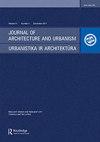THE GUIDELINE FOR CUSTOMISING INCREMENTAL HOUSING BASED ON TWO CHILEAN CASE STUDIES
IF 0.8
0 ARCHITECTURE
引用次数: 3
Abstract
Incremental housing, supported by governmental funding, denotes a solution for low-income households where they can gradually customise their dwelling. The Chilean government officials and architects proposed phases of construction which fell short of addressing the households’ capabilities and motivation to finalise their units. Hereof, this article looks at two incremental housing projects: Lo Espejo condominium (2007) and Las Higueras (2006) in the Santiago Metropolitan Region, Chile, to inquire capacities of government officials and architects’ comprehensive assistance to families’ housebuilding. The hypothesis holds that the greater responsibility of government officials and architects engaged with incremental housing will enhance motivation of low-income families to customise their house by self-building practice. Arguing for the importance of the self-building the author proposed the guideline for customising houses that comprises four phases: introducing the incremental construction design idea, discussing with families the possibilities for completing houses, connecting households’ construction plans with their financial resources, and presenting the customisation design template. This guideline structure is founded on extensive nine months fieldwork in the Santiago Metropolitan Region, carried out in close collaboration with low-income households from two neighbourhoods, the Ministry of Housing and Urbanism of Chile, the Architectural Office Elemental, and “Gubbins Arquitectos.”基于两个智利案例研究的定制增量住房指南
由政府资助的增量住房为低收入家庭提供了一种解决方案,他们可以逐步定制自己的住房。智利政府官员和建筑师提出的建设阶段没有解决家庭的能力和动力来完成他们的单元。本文着眼于两个增量住房项目:智利圣地亚哥大都市区的Lo Espejo公寓(2007年)和Las Higueras(2006年),以探究政府官员和建筑师对家庭住房建设的综合援助能力。该假设认为,政府官员和建筑师参与增量住房的更大责任将增强低收入家庭通过自建实践定制住房的动机。为了论证自建的重要性,作者提出了定制房屋的指导方针,包括四个阶段:引入增量建筑设计理念,与家庭讨论完成房屋的可能性,将家庭的建设计划与他们的经济资源联系起来,以及提供定制设计模板。该指导结构建立在圣地亚哥大都市区为期9个月的广泛实地调查基础上,与来自两个社区的低收入家庭、智利住房和城市建设部、Elemental建筑事务所和“Gubbins Arquitectos”密切合作。
本文章由计算机程序翻译,如有差异,请以英文原文为准。
求助全文
约1分钟内获得全文
求助全文
来源期刊

Journal of Architecture and Urbanism
ARCHITECTURE-
CiteScore
1.30
自引率
14.30%
发文量
12
审稿时长
15 weeks
期刊介绍:
The Journal of Architecture and Urbanism publishes original research on all aspects of urban architecture.
 求助内容:
求助内容: 应助结果提醒方式:
应助结果提醒方式:


